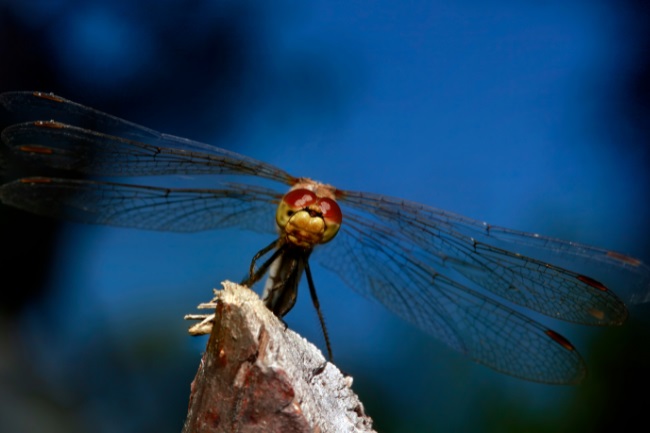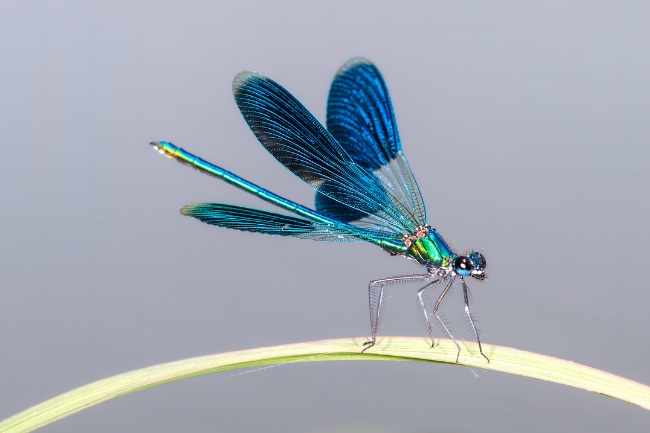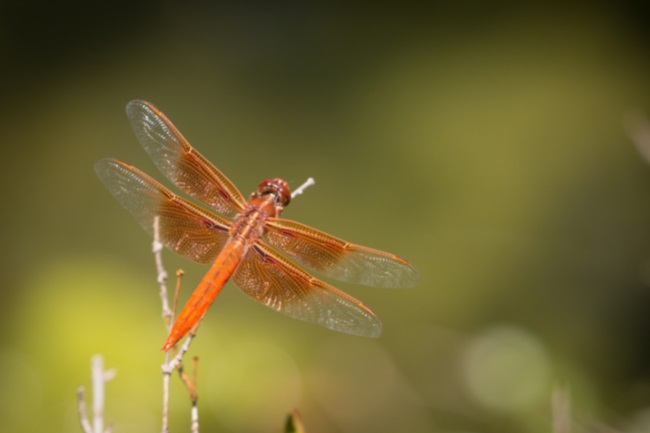Dragonflies do not sleep in the same way that humans do, instead, they enter a state of torpor, where their temperature lowers and they become less responsive. They do, however, require this ‘sleep’ in order to function well.
Contents
Do dragonflies sleep?

There is little research specifically on the sleep patterns of dragonflies, however, it is safe to assume they undergo a similar state to that of other insects. Insects in general do sleep, though their sleep is very different to that of humans. The ‘sleep’ insects enter into is known as torpor. Torpor is a state where the insect is unresponsive to all but very strong stimuli. In this state, their temperature lowers, and their metabolic functions reduce.
However, torpor isn’t just entered into in order for insects to rest, it is also a state-employed to get them through physically demanding conditions, for example, extremes of temperature and lack of food. Many insects enter torpor during the winter, or during cold nights.
| Dragonfly Species | Sleep Pattern |
|---|---|
| Common Skimmer | Nocturnal; Rests on vegetation during the night |
| Blue Dasher | Diurnal; Rests on vegetation during the day |
| Widow Skimmer | Nocturnal; Rests on vegetation during the night |
| Scarlet Darter | Diurnal; Rests on vegetation during the day |
| Common Whitetail | Nocturnal; Rests on vegetation during the night |
By shutting down they help to protect themselves and wait out the bad conditions until things improve, similar to how mammals hibernate during the winter.
Dragonflies may use torpor for both reasons, depending on their species. Some dragonflies species live only a year, with the young maturing quickly and adults emerging in their first summer. However, others may spend many years underwater as they feed and grow. These dragonfly larvae may enter torpor to get through the colder winter climate, or they may tough it out, remaining active.
Adult dragonflies do not survive the winter in most locations, meaning they do not need to enter torpor during this time. Both adults and larvae, however, need torpor as a daily rest. Though no research has been carried out directly on dragonflies, research on other insects has shown that sleep deprivation similarly affects insects as it does humans. Fruit flies and bees not allowed to rest were less able to complete tasks and demonstrated poorer memory recall.
Also read: Do Dragonflies Migrate or Hibernate? (Surviving Winter)
Where do they sleep?

Dragonflies, like most insects, are highly vulnerable when resting. As larvae they are everybody’s favourite food, and spend their time in a constant contest of hide and seek, evading larger predators. During torpor, they are slow to respond to stimuli and it can take them more time to react to danger, this sluggishness potentially leading to their deaths if not careful.
Therefore they, like many insects, are careful to hide away when they are at rest. As they spend their time underwater their options for hiding are usually amongst water weeds, or within the silt at the bottom of the water.
Adult dragonflies are much more capable of evading captures than their younger selves. Their amazing aerial skills have them evading all but the very swiftest of predators. However, while sleeping they are easy prey for any hungry mouth that happens to come along.
Therefore, they keep themselves safe by tucking themselves away in the vegetation, or foliage. Hidden behind reeds, within grassy tussocks, or clinging onto the undersides of leaves they are much harder to find than if they were out in the open.
How do they protect themselves while sleeping?

The main way dragonflies have to protect themselves when they are sleeping is to hide away from potential predators. They do this in part by physically hiding in vegetation, and in part by using camouflage.
The larvae, who are more vulnerable in general, keep their colours particularly demure, their palet being that of algae and mud, variations on a theme. Stripes and speckles add additional precautions, breaking up their outline in the water and helping them to blend in.
When it comes to adults it appears as if the drab old days have been abandoned. There are certainly plenty of dragonflies that come in bright and fabulous colours, but most have colours that, though bright when flitting through the sky, disappear into the undergrowth once they are perched and still.
Greens, browns, yellows and blues, and even reds surprisingly, blend in amazingly well when these little dragonflies are sat amongst grasses or on the bark of trees. Many also have their colours broken up into bands or cut through with black, helping to further blend them into the background.
How long do dragonflies usually sleep per night/day?
There aren’t any studies available on the length of time dragonflies sleep, however as a group dragonflies are generally active in the day and inactive at night. Some nighttime activity may occur in species that migrate over large stretches of water, meaning they cannot rest at night. Nighttime feeding has also occasionally been observed around artificial lighting.
| Dragonfly Species | Sleep Duration |
|---|---|
| Common Skimmer | 8-10 hours per day |
| Blue Dasher | 4-6 hours per day |
| Widow Skimmer | 8-10 hours per day |
| Scarlet Darter | 4-6 hours per day |
| Common Whitetail | 6-8 hours per day |
Yet, in general, dragonflies sleep at night, when the temperatures are lower and it is harder for them to hunt. You can often see dragonflies early in the morning or late in the evening, hunkered down, already becoming slow and sluggish.
Like many species it is likely they do not have a set amount of time they sleep, simply becoming inactive as the temperature drops, and reanimating once the morning sun revives them. It’s uncertain as to whether they need to rest in the day.
Dragonflies can often be seen perching, and during cold snaps, they will enter torpor during the day, but it’s not clear if they need the odd nap or two to get through the busy daytime bustle.
Getting a little shut-eye
We may not think of dragonflies as needing their beauty sleep, but few living creatures don’t require rest to function at their best. Yet for them sleep is not just a way to rest, it’s a way to get through the tough time, and survive into adulthood. An important and vital part of the dragonfly lifecycle.

